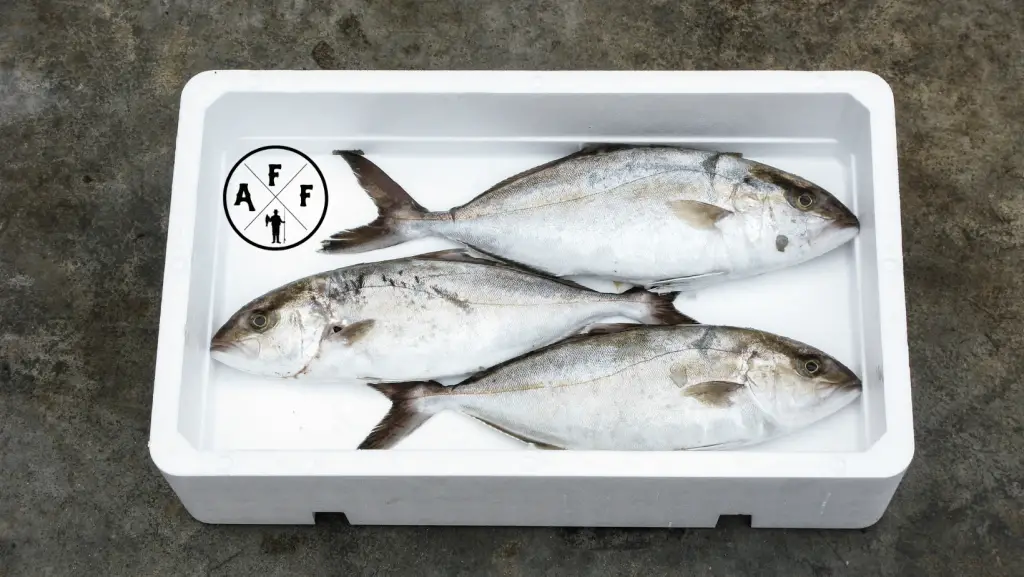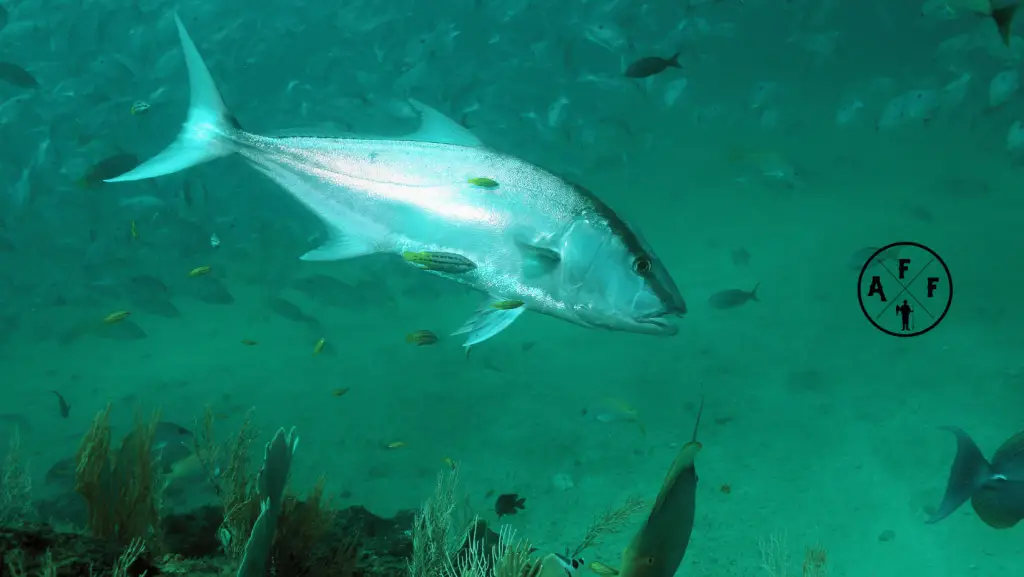
Is Amberjack Good to Eat?
Yes, it is! Amberjack tastes delicious, and they have a similar taste to the much more popular Grouper. I have talked with many fellow anglers that regard Amberjacks (AJs) as trash fish. Little do they know how good of table fare they are.
Most people who discard AJs are rightfully turned off because of the large number of worms found in larger AJs. While I understand their concern, it is perfectly fine to cut and clean around the worms, just like it is for any other species.
Now that I have shared how much I enjoy eating Amberjack let’s talk about the best ways to cook this fish, the best bait to use, and where to find them.
How to Prepare Amberjack
Before cooking Amberjack, I highly recommend bleeding them out, especially the larger ones.
Also, remove a few inches of the body closest to the tail before fileting the rest of the fish. If your AJ has worms, it is most likely in the tail section.
Once you bled out and cut off the tail, it is time to properly clean and filet your AJ.
For guidance on how to effectively bleed out a saltwater fish, check out the video below:
How to Cook Amberjack
Amberjack is a versatile fish that can be cooked in various ways, including grilling, baking, and pan-frying. Here are three recipes to help you cook Amberjack:
Amberjack Recipes

Grilled Amberjack
Season the fillet with salt and pepper or Old Bay and lemon before grilling. Cook on medium-high heat until the fillet is tender and flaky.
Baked Amberjack
Coat the fillet in a garlic butter sauce or your favorite marinade, then bake for about 10 minutes at 350°F.
Blackened Amberjack (My favorite way to eat Amberjack)
Heat a large skillet and add some oil. Season the fish with cajun rub (I prefer Old Bay), then cook for 4 minutes on each side until golden brown.
Best Bait For Amberjack

Live bait fish work best when fishing for Amberjack as they eagerly take many baitfish such as Finger Mullet, Sardines, Menhaden, and Cigar Minnows.
In North Carolina, the fall brings plenty of bait fish into the flats from the Atlantic Ocean. The easier ones to catch with my cast net are finger mullet and Menhaden, which I have had great success with for catching Amberjack.
Where to Fish For Amberjack
Amberjack can be found in both the Atlantic and Pacific Oceans. In the US, they can be found all along the east coast, including the Gulf of Mexico and the Caribbean.
I mostly catch Amberjacks in depths between 50-200 feet along structures such as ledges, wrecks, and live bottom areas. As with any pelagic species, combining the areas above with schools of baitfish will definitely increase your chances of catching AJs.
Common Questions Related to Amberjack
Below are some of the most common questions answered related to Amberjack fish.
Is Amberjack good to eat? What Does Amberjack Taste Like?
Amberjack has a heartier texture than Mahi Mahi while still being buttery with a mild flavor.
If I had to compare Amberjack to one fish, they taste similar to Grouper. I wouldn’t be surprised if more than one restaurant served Amberjack instead of Grouper as it reads on their menu.
Another fish that is similar in taste is King Mackerel, and if I had to pick between the two on a dinner table, I’d choose Amberjack.
Is Amberjack Safe to Eat?
Yes, Amberjack is safe to eat. While the worms found in larger Amberjacks are a big turn-off for many anglers, they can easily be avoided by properly cleaning the fish before cooking.
Can You Eat Amberjack Raw?
Due to the high levels of parasites in these larger fish, I do not recommend that Amberjack be eaten raw. To ensure safety, always clean and cook Amberjack before consuming it.
Why do people not eat Amberjack?
Most people avoid eating Amberjack because of the worms found in these fish. I have pulled up Amberjack that has them so bad that they are visible as soon as they exit the water and before landing on the boat.
What is another name for Amberjack?
Amberjack is also sometimes referred to as “Reef Donkey,” “AJs,” or “Jacks,” depending on the location.
There are many variations of these fish, including but not limited to “Greater Amberjack”, “Almaco Jack“, “Lesser Amberjack”, “Yellowtail Amberjack”, and “Banded Rudderfish”.
Are yellowtail and Amberjack the same thing?
Yellowtail Amberjacks are a subspecies of Amberjack, meaning they are just one of many variations of Amberjack.
Final Word

Amberjack is not just an excellent fish to eat; they can also put up one heck of a fight.
As long as Amberjack is prepared properly, there is no reason why you should overlook this species when fishing.
If you are interested in trying out Amberjack, I highly suggest that you get one of the best saltwater spinning reels and give it a try! Whether you bake, grill, or blacken your AJ, I’m sure the taste will not disappoint.
Tight lines!










